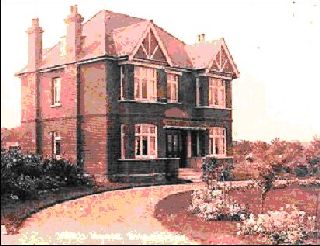 Headquarters
Headquarters
74 High Street
Billericay
Essex CM12 9BS
Affiliated to theCouncil for the
Protection of Rural Essex
Number 149
August 2003
CONFUCIUS SAID: "Study the past if you would divine the future."
It is unfortunate that historians chose to focus on the usurping greed
and avarice of so-called noblemen and kings - whose actions are at best
questionable and do not make for a good role model on how to conduct one's
life. Could this account for why people fight first and think afterwards,
if at all? I think it would have been a far, far better thing for the
world's progress, and mankind in general, if historians had focussed on
ideas and technical developments. Had they recorded and analysed the impact
that these had on changing living standards and the quality of life for
people, the world may have become more aware of technology and civilised.
THE HISTORY OF MANKIND IS THE HISTORY OF IDEAS
I propose to write short monographs or should I call them editorials on
engineering subjects, to encourage you to embrace technology, and not
to fear or be indifferent to it. Hopefully you may come to enjoy the excitement
of discovering how the world around you functions. Remember you can elect
a new chairman at the next AGM. Anyway, since it is summer, here goes
with the first offering:
Sunshine, or What's With This Ultra-Violet?
In the shade of the
old oak tree, and satisfied that he had covered his extremities with factor
15 against the ultra-violet rays, Henry lay back on the hammock and wondered
what this ultra-violet was from which he had to protect himself. Close
by, Helen, his wife was pruning the roses.
The Rainbow
"Helen, you studied Latin, what does ultra-violet mean?"
"Ultra, in Latin means above or beyond." She replied.
"But what is the 'violet' that it is higher or greater than?"
He queried.
"The frequency of the violet light in the visible spectrum."
She laughed, but went on to explain: "when it is raining, and the
sun is behind you, a rainbow can be formed in the sky. The raindrops act
as a prism splitting the normal white light that we get from the sun into
its constituent colours. This is known as the visible part of the electromagnetic
spectrum, or colloquially, the visible spectrum. First demonstrated by
Sir Isaac Newton in 1672."
"I remember the order of the colours of the rainbow by that famous
Scot: Roy G. Biv," Henry said, "You know: Red, orange, yellow,
green, blue, indigo and violet."
"Oh I remember them by a historical reference." Helen replied,
"Richard Of York Gave Battle In
Vain." Helen thought that Richard III had been given a bad
press after the battle of Bosworth in 1485."In the rainbow",
Helen said, getting more technical, "since the red light oscillates
at a lower frequency than the blue it is refracted the least and appears
at the top of the arch. Whereas the violet coloured light has a higher
rate of oscillation than the red, and is therefore refracted more,
"Is that why the sky appears blue during the day, because the light is dispersed through a larger angle, coming from over head to a person on the ground," asked Henry. "Similarly, at dusk the sky appears red to orange because the sun is lower in the sky and so only the rays with the least refraction are seen in the sky?" "Yes," said Helen, "easy isn't it once you understand what is happening!" She went on to explain. "Just as infra-red applies to frequencies lower than the frequency of oscillation of the red light, ultra-violet refers to frequencies higher than that of the violet light. That is, infra-red and ultra-violet frequencies are outside the range of human vision or perception." She also mentioned, "nature, in terms of optimising the conversion of the sunlight into energy for plants (photosynthesis), cleverly chose the middle colour green for chlorophyll. And that the rainbow is curved because the source of the light, the sun, is so curved."
Qua Vadis? Ware! Where?
Hertfordshire
And did those coaches in ancient time's journey through Hertfordshire's
green and pleasant land. This experience was re-enacted by 36 members
of the Billericay Society on Wednesday the 4th of June 2003 thanks to
the organising skills of Marian Thilo.
The day started at Waltham Abbey after a coffee break in a cosy pub. Refreshed we toured the Abbey after our
